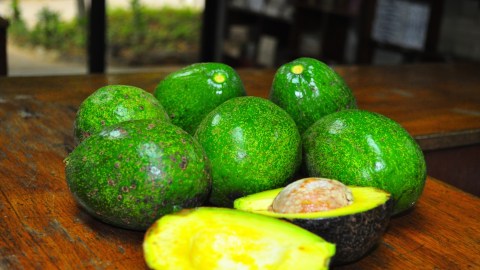Domestic Avocados May Be in Short Supply, Imports May Be Funding Cartels

Avocados have become quite popular, since 1993 global consumption has doubled, according to the U.N. Food and Agriculture Organization. But Anna Roth of Modern Farmer writes that droughts may threaten to make the green fruit scarce next spring, putting farmers and buyers in a predicament.
The National Geographic’s Dan Stone calls it a “quinoa moment,” where supply can’t keep up with demand. Regardless, nature may put a strangle on the fruit just enough that it becomes unprofitable for some farmers. It takes 74 gallons of water to produce a pound of avocados. Some farmers are waiting to see if the rains this fall will be enough to supply their cash crop to grow in spring. But many farmers in California aren’t waiting around. Instead, letting their fields go unseeded for another season, because of rising fertilizer and water prices. However, California produces 95 percent of the avocados grown in America—a $435 million industry. If farmers are unwilling to grow, Americans will have to look to other countries to get their avocado fix.
Imported avocados may have to sustain Americans’ appetites, which means higher prices that some avocado-based industries may not be able to sustain. Even so, if you’re able to purchase them at your local market in 2015, you may want to inquire where the fruit came from. Down in Mexico, the cartels control a $1 billion avocado market from production to distribution, in some cases. There are other countries to buy from, the cartel’s reach doesn’t hold Chile, but its farms may also be in danger of drought.
Avocados are precious in Chile where they refer to it as “oro verde”–green gold. There, farmers are going to great lengths to keep Avocado production going–even if it may not be sustainable. Farmers are draining groundwater, taking away precious drinking water from people who need it, and planting the crop on the hillsides to benefit from glacier run-off. But this method won’t be able to sustain the crop or its people for long.
The result for Americans this spring may simply be a more expensive avocado. But for those in Mexico its a cash crop to fund the cartels and in Chile it’s the “oro verde” that feeds the people it threatens to dehydrate.
Read more at Modern Farmer
Photo Credit: whologwhy/Flickr





